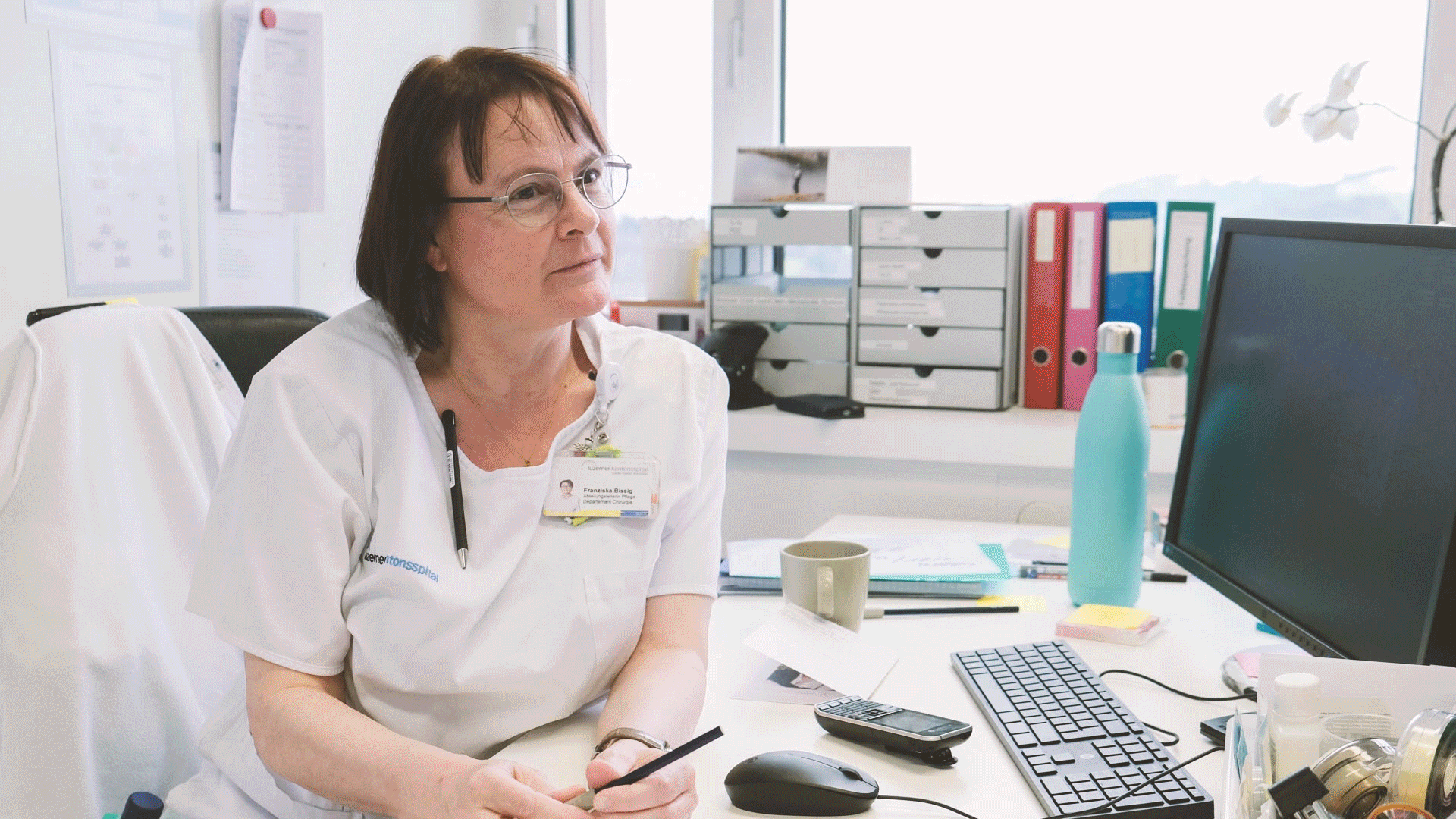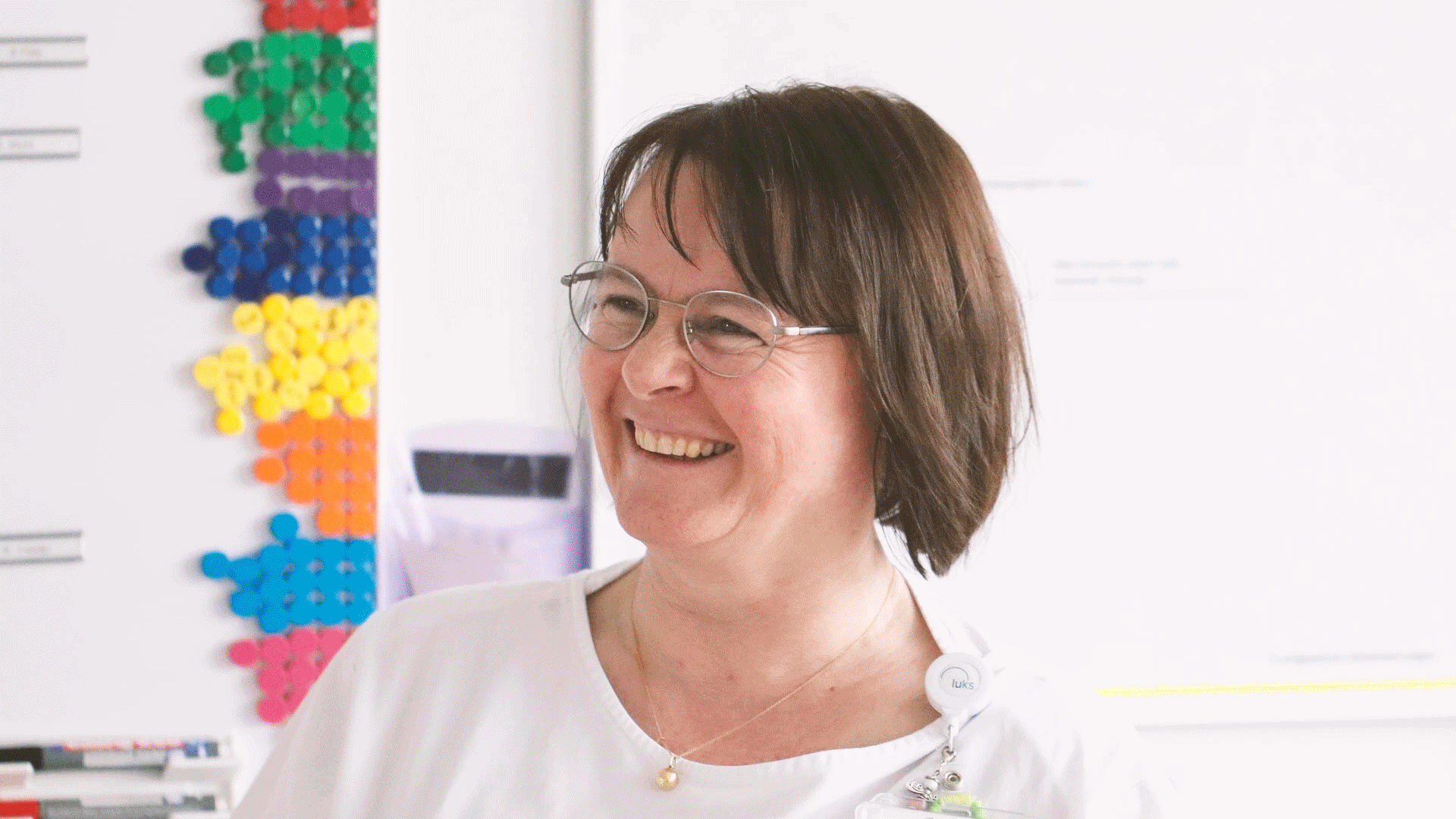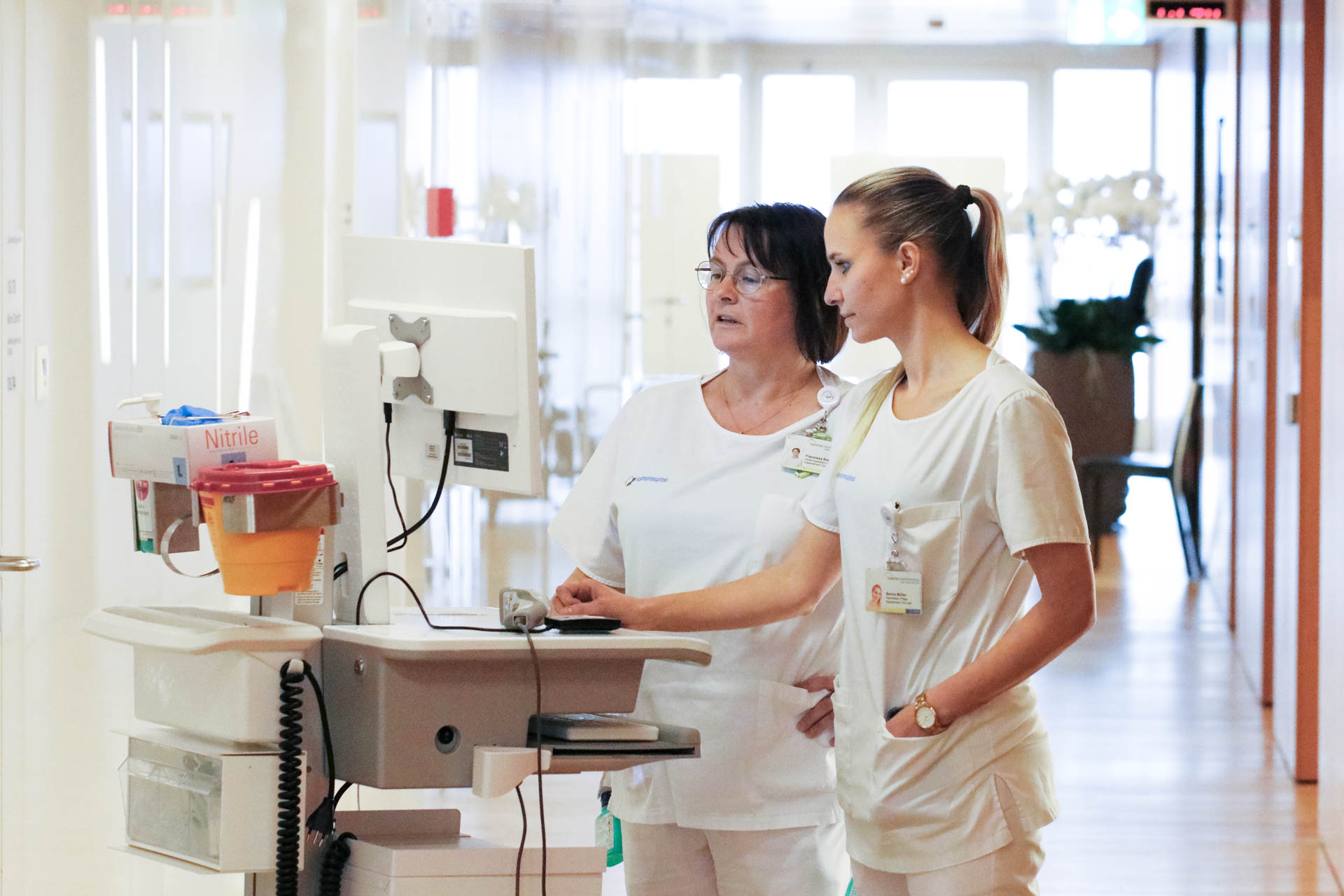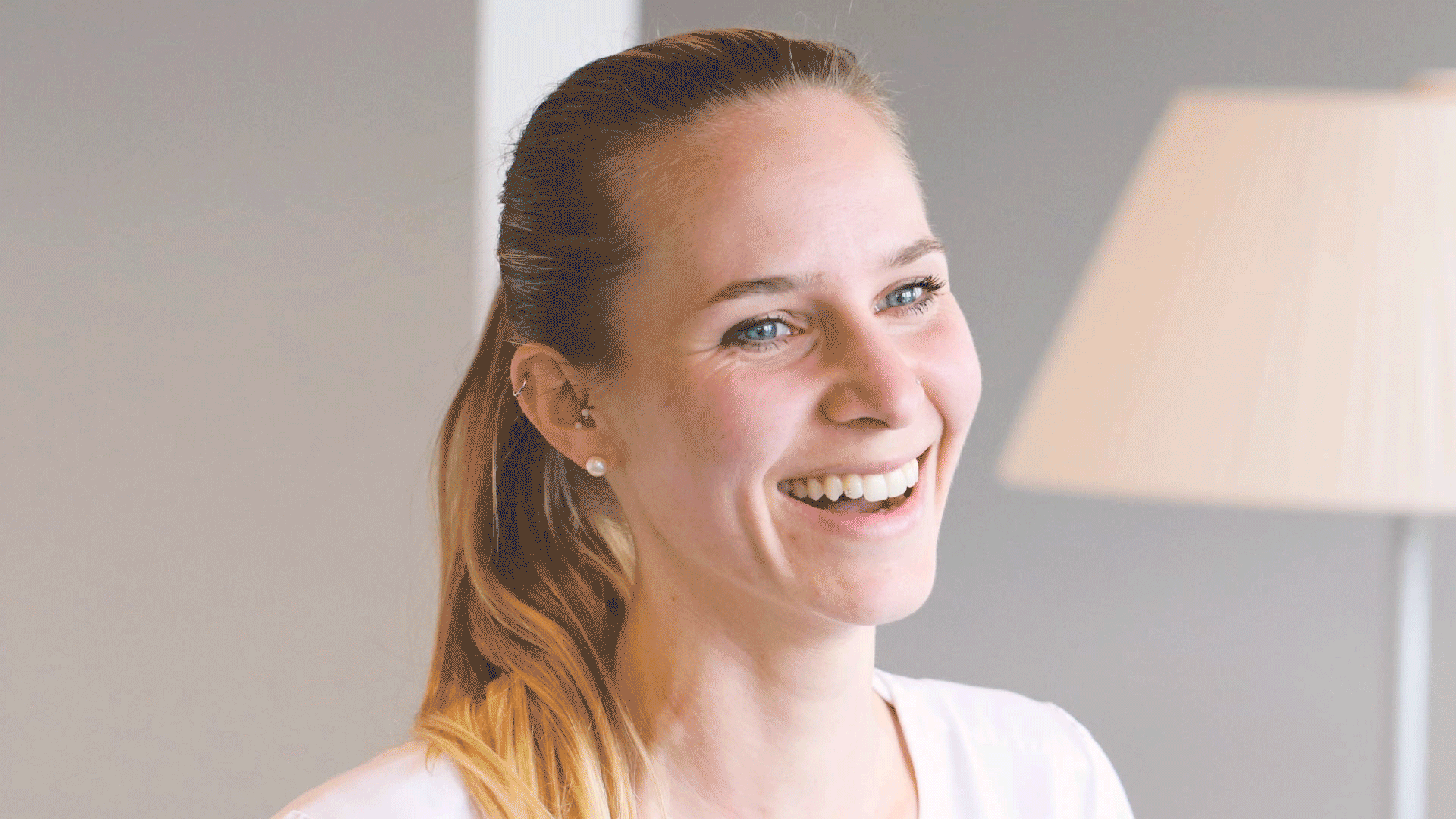
Ask Franziska Bissig why she loves her job as a nursing supervisor at the Lucerne Cantonal Hospital Group, and she breaks into an easy smile.
“The best feeling for me is when you can help your patients, help cure them,” she says. “And if your staff is happy, that makes you happy, too.”
LUKS, as it’s known locally, is an expansive campus with views on the mountains that surround Lucerne. The group includes three other hospitals in Central Switzerland. Of its almost 9,000 employees, 2,780 are nurses. Bissig has been a nurse for about 25 years, the past four as a supervisor of her team of about 70 on a post-surgery ward.
Part of keeping her team happy involves the creation of a monthly schedule that covers three shifts per day, seven days a week. She must try to accommodate day-off requests, shift preferences and legal requirements. It’s an immense task, which Bissig and other nurses compare to “a game of Tetris,” where moving one cell creates a cascade of other moves to resolve.

In the summer of 2023, she and her co-leaders started testing an artificial-intelligence powered system to assist with scheduling. It can process all the variables at a much greater speed than a human being, producing a draft schedule that still needs some minor adjustments, but is much less time consuming to complete. It has left her staff more satisfied, and it also gives her more opportunities to work with patients.
“When the system is fully implemented,” Bissig says, “I’ll be able to save two to three days a month, and that’s huge.” She says that is time she can use to take care of patients and to manage her team.
LUKS has more than 100 nurses who make schedules, so in terms of creating more time for treating patients, it’s a game changer. The back end of the system, created by Microsoft partner Polypoint, is being integrated in a Microsoft Teams 365 app. This allows nurses to place their schedule requests directly into the system, giving them more control over the process.
LUKS is not alone. Hospitals across Europe are embracing AI technology to save time, stretch budgets and serve patients better.
From paper sheets to AI tools

The story of how the AI scheduling app came into being involves some forward-thinking hospital executives, a Swiss company that specializes in health-care scheduling software, the staff at LUKS, Microsoft technology experts and Andri Puorger, a Microsoft Switzerland Account Technology Strategist for Healthcare.
Puorger became interested in working in the field of health care from his partner, a station lead in the intensive care unit at a Zurich hospital. From her, he learned about the shortage of nurses, the difficulties in retaining them because of the heavy workload and the outdated way many hospitals schedule staff.
“I said ‘it can’t be that you work like this,’” he says, “I didn’t understand why a station lead has to invest three to five days a month for planning while, with the help of technology, it could be done much more efficiently.” He knew about a Swiss company, Polypoint, that specializes in health-care scheduling software, and wondered if a collaboration could deliver something faster and more efficient.
Thomas Buerdel, the Head of Innovation at Polypoint, recalls the early conversations with Puorger and Senior Program Manager Teams Paul Cherbin.
“We had quite a few questions in our minds,” Buerdel says. “We have about 90 employees, and yes, we have about 1,000 customers in healthcare, but we are not that big.”

Andri Puorger, left, Account Technology Strategist for Healthcare, Microsoft, and Thomas Buerdel, right, Head of Innovation, Polypoint AG.
Puorger reassured Buerdel that Microsoft recognized that Polypoint had a depth of knowledge in Swiss laws and regulations, the peculiarities of the Swiss health-care system and 36 years of experience.
Puorger proposed that Microsoft could help Polypoint reach more clients if its system, which uses AI to calculate the best outcomes in complex schedules, was available in a Teams app, making it accessible to anyone on hospital staff with a smartphone.
“I thought we could make a huge impact working together,” Puorger recalls. “So I asked LUKS and I asked Polypoint if we could bring this idea together, and they both said yes. I thought it could be a win-win-win situation.”
Buerdel says that that Microsoft’s respect for Polypoint’s expertise in the field led to an atmosphere of trust. “At that point the sentiment changed,” he says. “The collaboration with Microsoft is quite cool, and it helps us as a small company to have a little bit of awareness, and it’s a positive impact on our image, too.”
Saving time for patients

Michael Döring began his career at LUKS as a nurse, and in 2010 he became the hospital’s chief nursing officer. He says that since the Covid-19 pandemic retaining and finding nurses has been a challenge, and that he is always looking for ways to improve working conditions to keep staff as happy as possible.
During the past five years he helped implement a digital data system for all the nurse stations and as well as the adoption of Microsoft 365 throughout the hospital.
“This was a very big change for us because our way of collaborating changed completely,” he says.
He says the adoption of Teams created much more flexibility for his nurses, who could now take meetings wherever they are, and Sharepoint allowed easy sharing of documents between nurses and across departments.
When a Microsoft representative suggested that there could be ways to save time on scheduling, Döring’s interest was piqued. It was a problem he had been trying to solve since his first days in the executive role.
“We have too few nurses and too much work, so if there is a way to give time back to the nurses, we want to do it,” he says.
The Microsoft Technology Center in Zurich played host to a three-day workshop in January 2023 where Döring, nurses, human resources and IT staff and representatives from Microsoft and Polypoint met to define the problem and design a solution.
Döring says that intensive approach circumvented the normal, achingly slow process of weekly meetings to find solutions to other systematic problems at the hospital. It also gave employees from every part of the hospital a role to play, creating trust and a sense of empowerment.
He says the nurses wanted a system they could directly access themselves to make time-off requests and state their preferences. Teams was a natural fit because it already plays a major role in internal communications. The first pilot tests, on two nurse stations, were carried out in the summer of 2023.
“I was getting ready to go on vacation, and I thought we wouldn’t be able to get the first schedule done until after I was back, but one of the leaders from the stations came to me and said, ‘Hey Michael, we have the first schedule ready, it worked!’”
They had a few minor adjustments to make, he says, but the nurses were pleased from the beginning, and when the pilot was over, they did not want to go back on the old system.
The hospital is now implementing the completed app for nurses across all departments. The hospital hopes to have it in use for all shift employees at all of the hospital’s locations by 2026.

The hospital has about 450 employees who make schedules, according to Jacqueline Rohrbach, the chief human resources officer. She says that based on the pilot projects, LUKS will be able to reduce the time spent on scheduling by about two thirds. The new system will save hundreds of days of labor each year across departments. She says it’s a plus that people can more easily make scheduling requests, and more often get them approved.
“You give people a say,” she says, referring to the magnet initiative the hospital group has launched to continuously improve working conditions with the active involvement of employees. Once the scheduling system is fully implemented, they can make their requests from anywhere, she says. “It’s been a win-win for all sides.”
AI and ‘the human touch’

On the 13th floor, Franziska Bissig and her co-leader on the day shift, Sarina Müller, are talking about the patients on the ward and preparing for the afternoon shift change.
Müller has been a nurse for nine years, and she also works on the scheduling. She says the AI app creates “a good framework, but then we have to revise and correct the plan to fill the gaps. So it’s not possible to get the whole plan with the AI doing it. It still requires a human touch.”
Asked about the situation on the labor market and the younger generation of nurses, Müller says that the younger nurses especially are more concerned about work/life balance and appreciate having more leisure time. Finding ways to satisfy those needs is crucial for retaining staff, she says. “If they can’t get that time off, they can quit and maybe half a year later get a job again because it’s easy to get a job as a nurse.”
Bissig agrees. “I find it good that young people have their ideas of how to work, and that’s why I keep close to my team members and listen to what they want to try to make it possible. The new scheduling tool is one more way to do that.”
Top photo: Franziska Bissig, a nurse supervisor, at her desk at the Lucerne Cantonal Hospital in Switzerland. Photo by Chris Welsch for Microsoft.

